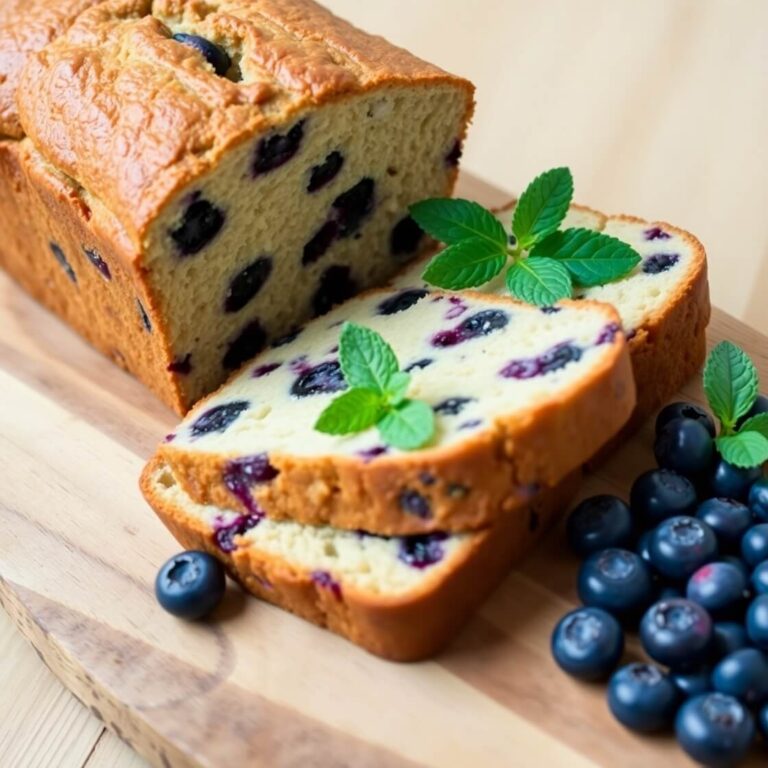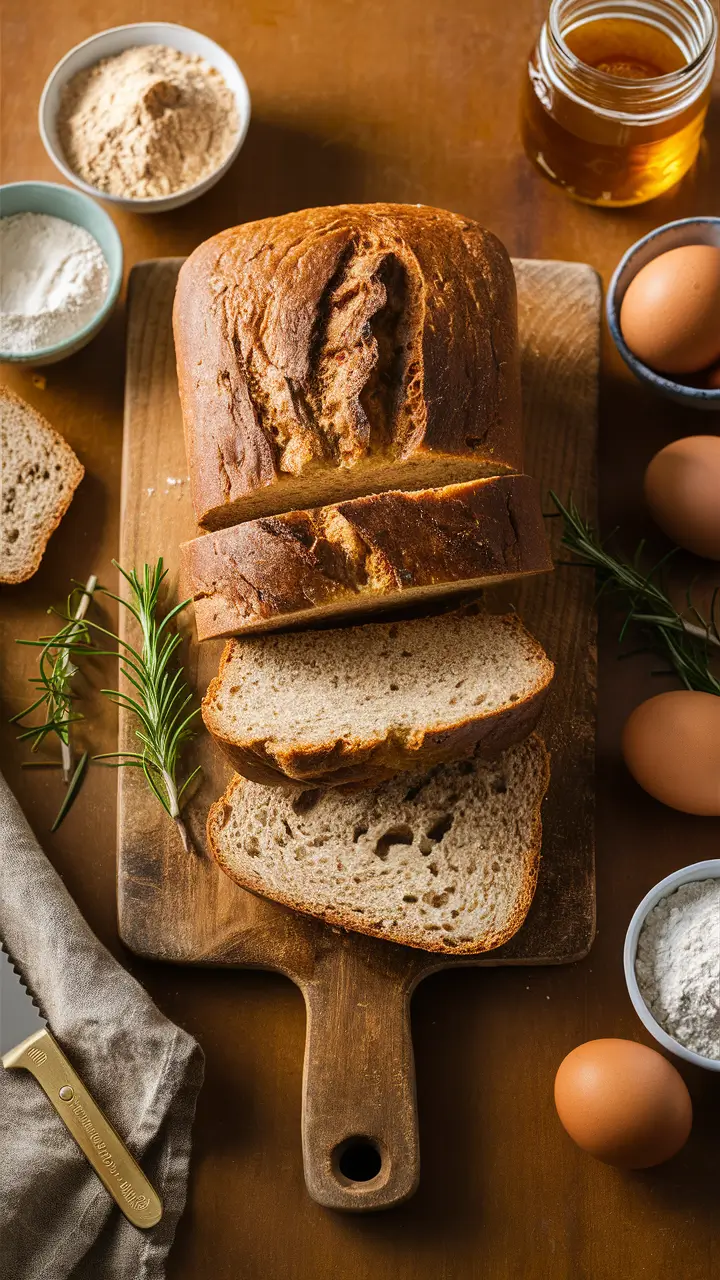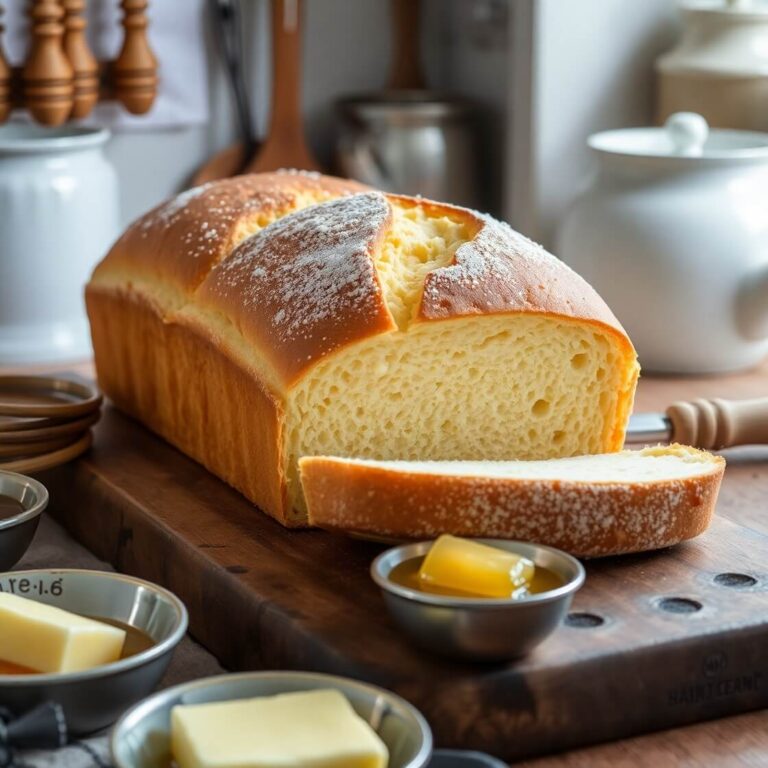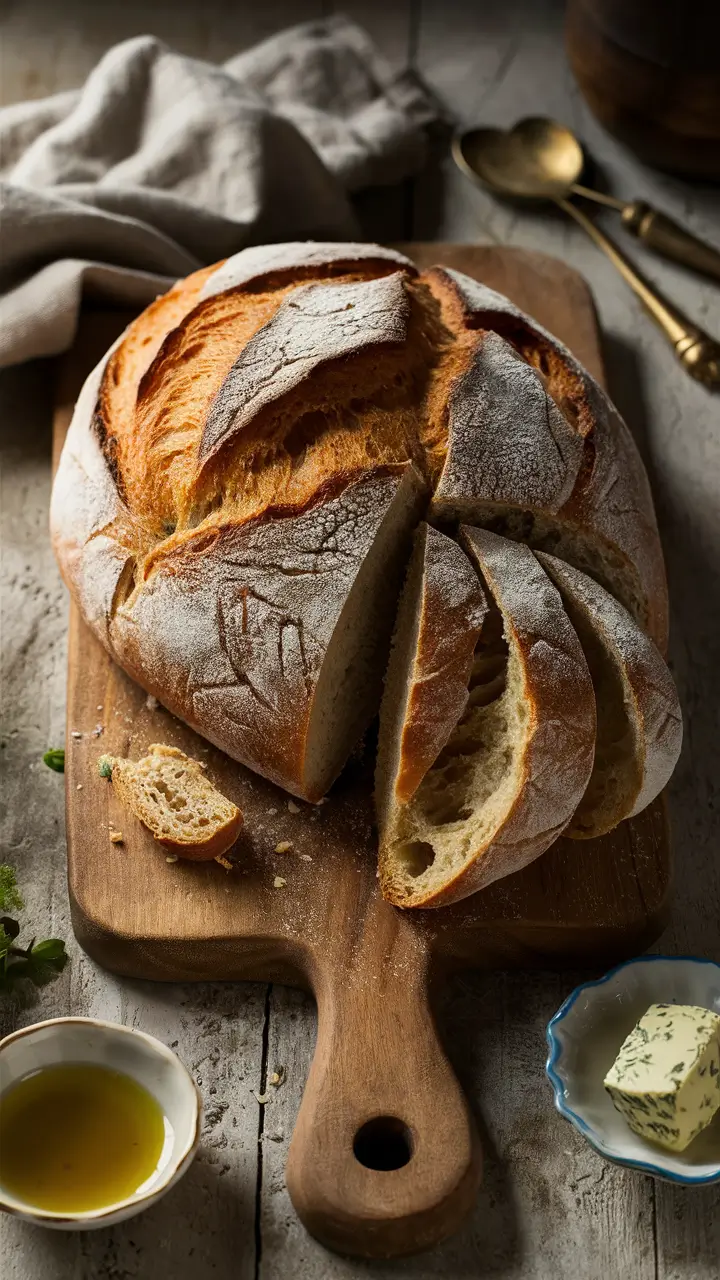
There’s something about a freshly baked baguette that instantly transports you to a quiet morning in Paris, with the soft hum of the bakery oven and the earthy aroma of golden crusts filling the air. This recipe was born out of my obsession with recreating that experience at home—a humble challenge that turned into a deeply satisfying routine.
A baguette might look like a simple loaf, but it’s the definition of “less is more.” With just a few ingredients, you can create a crust that sings when you crack it open and a soft, chewy interior that’s perfect for almost anything—breakfast spreads, elegant charcuterie boards, or late-night garlic bread. Once you make your own, you might never go back to store-bought again.
Why I Love This Recipe?
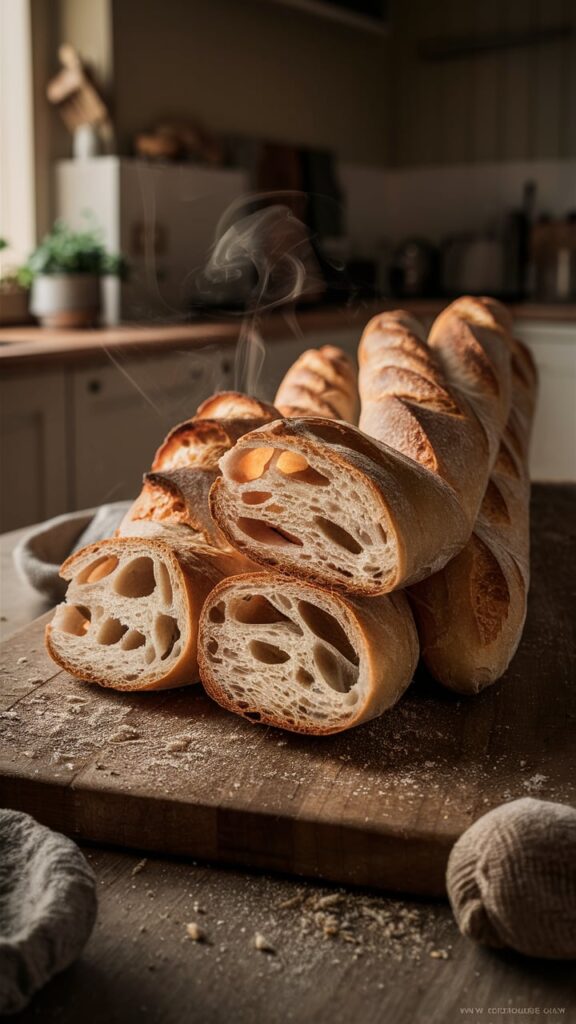
Making a baguette is equal parts science and art—but once you learn it, it becomes addictive.
This recipe is designed not just to teach you how to bake bread but to let you feel the process. You’ll understand the dough, know when it’s ready, and learn the subtle cues of fermentation. What makes this recipe special is its accessibility—no fancy equipment, no special flour, just simple ingredients and a little patience.
The reward? A golden, crispy crust that crackles when you tear it open and a soft, airy crumb inside. It’s the kind of bread that makes you proud. I also love that this recipe has a slow rise, meaning better flavor development and flexibility in your day. If you’re someone who wants to elevate your baking without getting overwhelmed, this is the perfect place to start.
Ingredients for Baguette Recipe
What makes the baguette so iconic is also what makes it approachable: it requires just four core ingredients.
This means every ingredient has to shine. Quality matters. But don’t worry—most of what you need is likely already in your pantry. Here’s what you’ll be working with:
- Bread Flour – Choose one with high protein content (11.5% or more). It helps build strong gluten strands, which give the baguette its classic chew and structure.
- Water – Use filtered or room-temperature water if possible. The temperature will affect the dough’s fermentation, so slightly warm water (around 100°F or 37°C) works best.
- Instant Yeast – You can use active dry yeast too, just be sure to bloom it beforehand. Yeast is what makes your dough rise and creates those airy pockets inside the crumb.
- Salt – It not only adds flavor but also regulates yeast activity and strengthens the dough.
Optional but helpful:
- Cornmeal or semolina flour for dusting the baking tray to prevent sticking.
No sugar. No eggs. No oil. The magic of baguettes is how simple ingredients, handled with care, turn into something truly special.
How Much Time Will You Need?
Patience is the secret ingredient in a good baguette.
While the hands-on time is under 45 minutes, you’ll need to plan ahead for resting, rising, and proofing.
- Prep Time: 20 minutes
- First Rise (Bulk Fermentation): 1 hour
- Stretch and Fold: 10 minutes over the course of an hour
- Second Rise: 1 hour
- Shaping & Final Proof: 30 minutes
- Baking Time: 20–25 minutes
Total Time: About 4 hours (most of it is hands-off)
This process may seem long, but each resting period makes the dough better—and the final bite absolutely worth it.
How to Make This Baguette Recipe

Step – 1: Mix the Dough
In a large mixing bowl, combine 3 ½ cups (420g) of bread flour with 1 ½ tsp (9g) of salt and 1 tsp (3g) of instant yeast. Gradually add 1 ½ cups (360ml) of lukewarm water while mixing with a wooden spoon or your hand.
Once the dough starts coming together into a shaggy mass, switch to your hands and knead it gently in the bowl for a few minutes until all flour is incorporated.
Step – 2: Bulk Fermentation
Cover the bowl with a clean kitchen towel or plastic wrap and let it rest at room temperature for 1 hour. This is when the yeast starts feeding on the flour and developing flavor.
Step – 3: Stretch and Fold
Every 20 minutes during the bulk fermentation, perform a stretch and fold: grab one edge of the dough, stretch it up, and fold it over the center. Rotate the bowl and repeat 3 more times.
Do this 3 times in total during the 1-hour rise. This process builds gluten strength without kneading.
Step – 4: Shape the Dough
After the dough has risen and is airy but not sticky, gently transfer it to a lightly floured surface.
Divide the dough into 2 or 3 equal pieces (depending on the size of baguette you want). Flatten each piece into a rectangle, then fold one side into the center, pressing gently. Fold the other side over and seal.
Roll gently into a log about 12 inches long, tapering the ends to get that classic baguette look.
Step – 5: Final Proof
Place the shaped baguettes seam-side down on a baking sheet dusted with cornmeal or lined with parchment paper. Cover with a damp towel and let them proof for 30–45 minutes, until slightly puffy.
Step – 6: Score and Bake
Preheat your oven to 475°F (245°C) with a baking stone or an inverted baking sheet inside to heat up. Place a pan of water on the bottom rack—this steam helps develop a crispy crust.
Using a sharp knife or bread lame, score each baguette with 3–4 diagonal slashes.
Carefully transfer the baguettes onto the hot stone or sheet. Bake for 20–25 minutes until deeply golden brown. They should sound hollow when tapped.
Step – 7: Cool Before Slicing
Let the baguettes cool on a wire rack for at least 30 minutes before slicing. This allows the crumb to set and prevents it from becoming gummy.
Substitutions
Sometimes, ingredients or equipment aren’t always available—and that’s okay.
- Bread Flour Substitute: You can use all-purpose flour, but your baguette will be slightly less chewy. Add 1 tbsp of vital wheat gluten per cup to make up for lower protein.
- Instant Yeast Swap: If using active dry yeast, bloom it in warm water for 10 minutes before mixing it into the flour.
- No Baking Stone? Use an inverted baking sheet preheated in the oven.
- No Lame or Bread Scorer? A very sharp knife or clean razor blade works just fine for scoring.
These swaps keep the core of the recipe intact without compromising too much on texture or flavor.
Best Side Dish of Baguette Recipe
Baguettes shine with everything, but here are three unbeatable pairings to elevate your meal:
- Classic French Onion Soup – The crusty baguette is perfect for dunking into the rich, caramelized broth topped with melted cheese.
- Baked Brie with Fig Jam – Slice the baguette thin and toast for a sweet-savory contrast that’s elegant yet easy.
- Garlic Herb Butter Spread – Slather fresh baguette slices with warm, homemade garlic butter for a comfort-filled treat.
Serving and Presentation Tips
The way you serve your baguette makes all the difference in how it’s enjoyed.
Whether it’s fresh out of the oven or served later in the day, presentation transforms a humble loaf into an eye-catching centerpiece. Let your baguette rest on a wooden board lined with parchment paper for a rustic bakery-style vibe. Slice diagonally to reveal the airy interior—this angle not only looks appealing but also provides more surface area for spreads or dips.
If serving with soup or a cheese board, keep slices partially stacked to show off the golden crust. For a brunch table, serve in a linen-lined basket to keep the bread warm and fresh longer. If your guests arrive late, rewarm the baguette briefly in the oven to restore that perfect crunch.
Tips and Tricks to Make This Recipe Better
There’s a rhythm to baguette baking that makes it both simple and special—if you know what to look out for.
- Use a long fermentation for deeper flavor. Let the dough rise in the fridge overnight for more complexity and a crustier bake the next day.
- Steam is crucial. Don’t skip placing a pan of water in your oven—it gives the crust that iconic crackle.
- Don’t over-flour your workspace. Too much flour can prevent your dough from forming a good surface tension, which is key to shaping baguettes that hold.
- Practice your scoring. Confident, fast slashes with a sharp blade make all the difference. Wobbly or shallow cuts lead to poor oven spring.
- Invest in an oven thermometer. Your baguette depends on consistent, high heat—don’t trust the dial on your oven.
Mastering these subtle touches will elevate your baguette from good to bakery-quality.
Common Mistakes to Avoid
Even seasoned bakers make baguette mistakes—here’s how to sidestep them.
- Under-proofing the dough: If your baguette feels heavy or lacks open crumb, it probably didn’t proof long enough. You want the dough puffy and jiggly before baking.
- Skipping the steam: No steam = dry crust. Use boiling water in a tray or even spray the oven walls when loading the bread.
- Over-handling the dough: Too much shaping knocks the air out. Be gentle and intentional with your hands.
- Baking on a cold tray: Always preheat your baking surface for the best crust development.
- Cutting too early: Let the bread cool for at least 30 minutes before slicing. It’s still cooking inside, and slicing too soon leads to a gummy texture.
Knowing what not to do is just as important as following the recipe.
How to Store It
Storing baguettes can be tricky—but manageable with a few smart tips.
- Short-term (1–2 days): Wrap the loaf in a clean kitchen towel and keep it at room temperature. Avoid plastic, which makes the crust soggy.
- To re-crisp: Preheat your oven to 375°F (190°C) and warm the baguette for 5–7 minutes.
- Freezing: For longer storage, wrap the baguette in foil, then place in a freezer-safe bag. Freeze for up to 3 months. To serve, let it thaw at room temperature and reheat in the oven.
- Never refrigerate. The fridge actually speeds up bread staling.
FAQ
Have questions about baking baguettes? You’re not alone.
Can I use sourdough starter instead of yeast?
Yes, but the process changes. You’ll need to increase fermentation time and adjust hydration. The result is a more complex flavor.
What’s the best flour brand for baguettes?
Look for King Arthur Bread Flour or any high-protein flour with at least 11.5–12% protein.
Can I make this dough in advance?
Yes. After the first rise, you can refrigerate the dough overnight for a cold ferment. It improves flavor and texture.
Why didn’t my baguettes rise properly in the oven?
This could be due to weak gluten development, over-proofing, or incorrect oven temperature. Also, check that you created enough steam.
Can I make mini baguettes instead of full-size?
Absolutely. Divide the dough into smaller portions and reduce the baking time by 5–8 minutes depending on size.
Baguette Recipe
This classic French baguette recipe creates loaves with crisp golden crusts and tender, chewy interiors—perfect for sandwiches, spreads, or simply tearing apart with a swipe of butter. With just four ingredients and a little patience, you can recreate bakery-style baguettes at home without any special tools. The long fermentation brings out complex flavors, while the proper shaping and scoring give it that unmistakable artisan look. Ideal for home bakers looking to level up their bread game, this recipe delivers consistently excellent results with straightforward steps. It’s more than bread—it’s an experience.
- Prep Time: 20 minutes
- Cook Time: 25 minutes
- Total Time: ~4 hours
- Yield: 2 full-size baguettes
- Category: Bread
- Method: Baking
- Cuisine: French
- Diet: Vegetarian
Ingredients
-
3 ½ cups (420g) bread flour
-
1 ½ tsp (9g) salt
-
1 tsp (3g) instant yeast
-
1 ½ cups (360ml) lukewarm water
-
Cornmeal or semolina (for dusting)
Instructions
-
Mix flour, salt, and yeast in a large bowl. Add water and mix until a shaggy dough forms.
-
Knead gently until combined and let rest covered for 1 hour.
-
Perform stretch-and-folds every 20 minutes during that hour.
-
Shape dough into 2 baguettes. Let proof for 30–45 minutes.
-
Score baguettes, bake at 475°F with steam for 20–25 minutes.
-
Cool before slicing.
Notes
-
Use a baking stone or preheated tray for a crisper crust.
-
Try overnight cold fermentation for deeper flavor.
-
Use high-protein bread flour for best structure.
Nutrition
- Serving Size: 1/4 baguette
- Calories: 185



